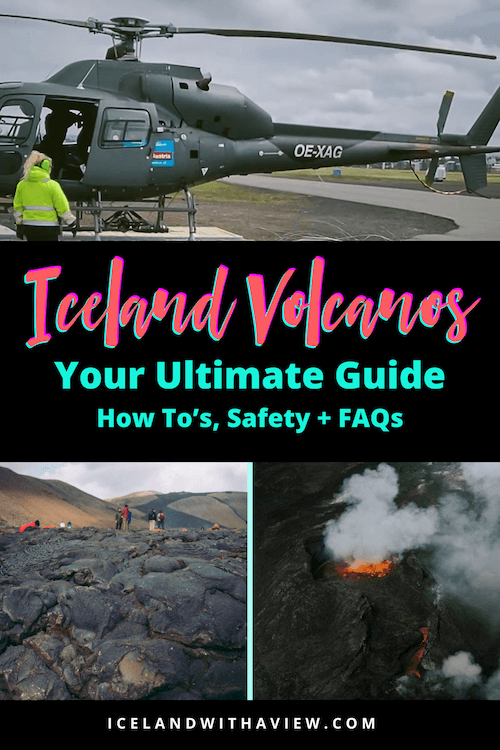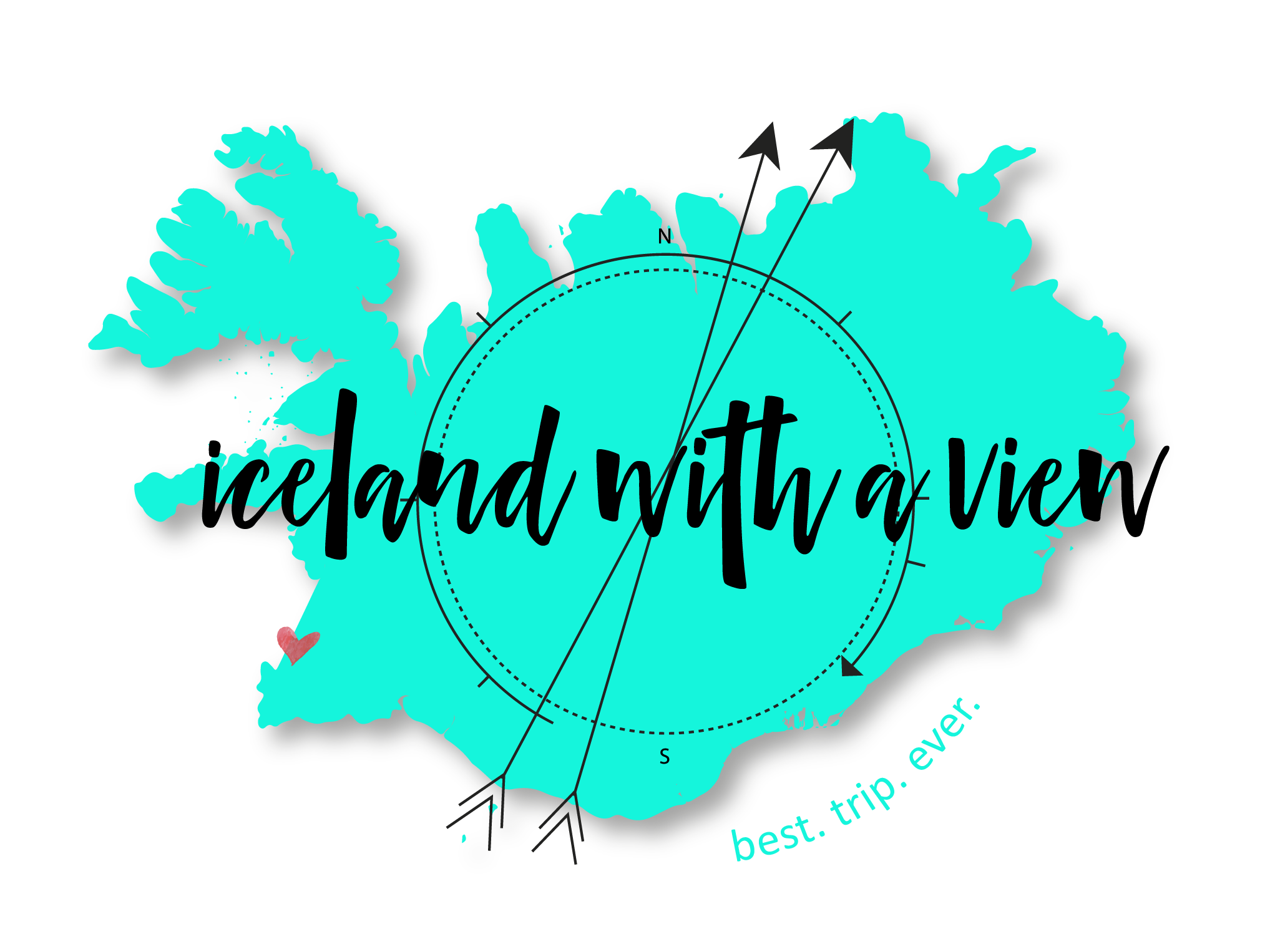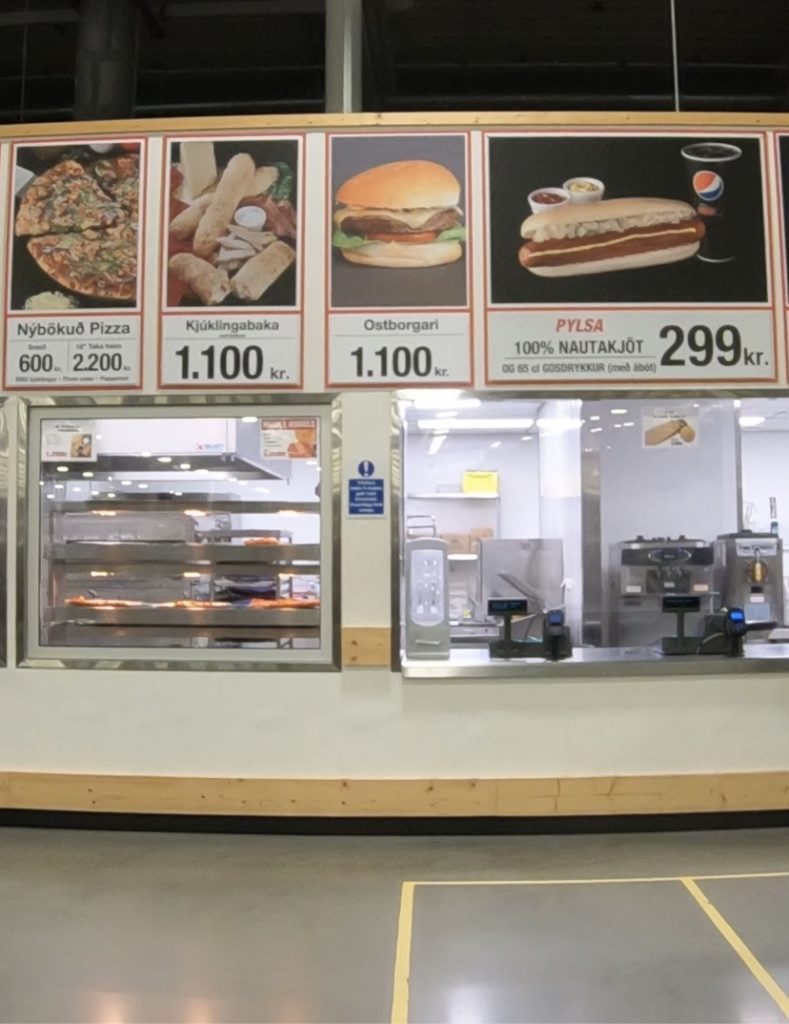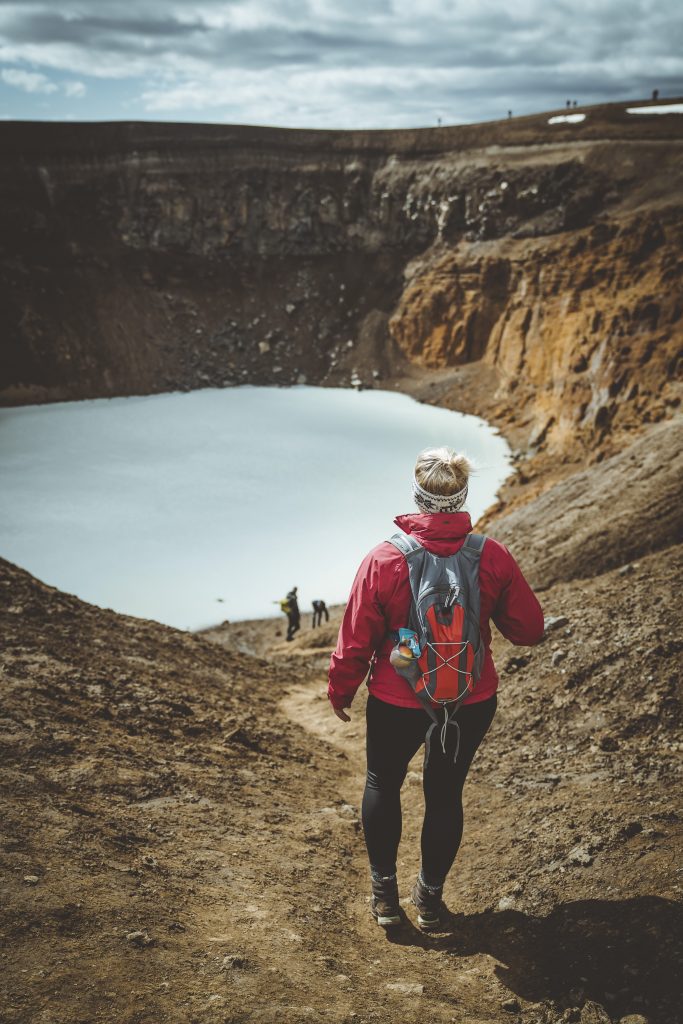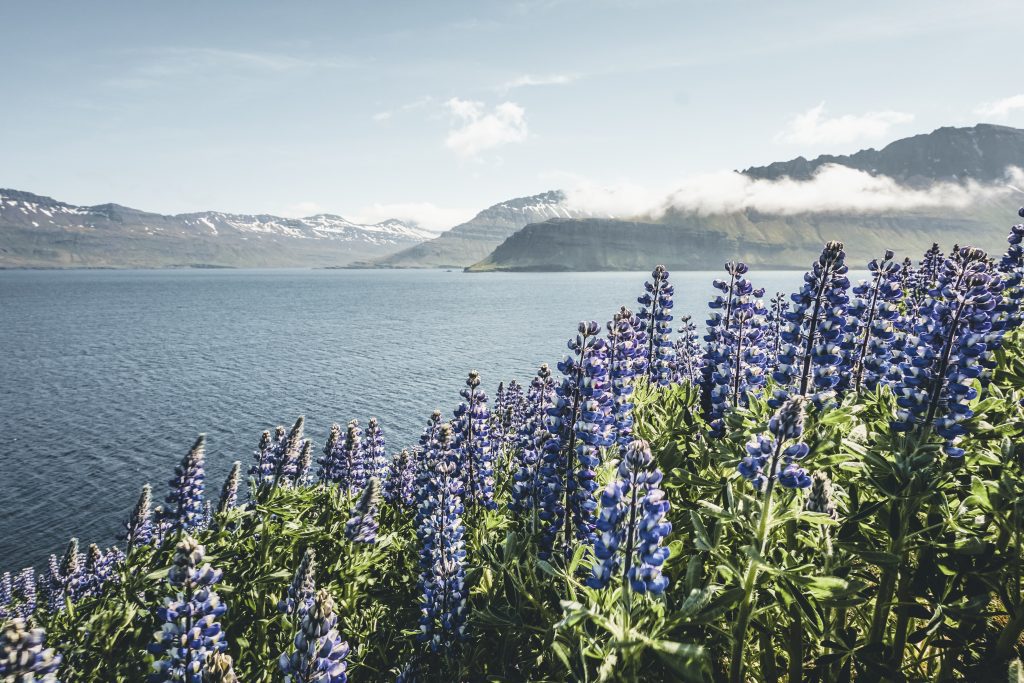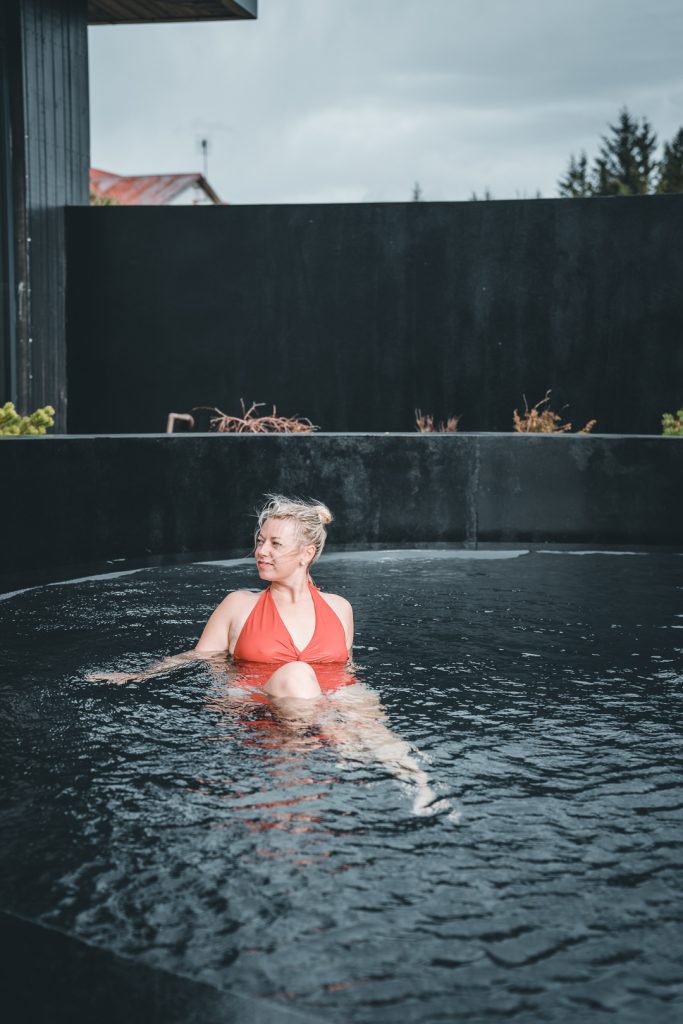Icelandic volcanoes have been making headlines recently, and it’s got everyone talking!
You might be curious:
Where is the volcanic eruption in Iceland? Are the locals constantly on edge, ready to evacuate at a moment’s notice? Should I cancel my trip or is it just media hype?
Hang tight – I’m here to answer all your questions! 😊
With volcanic activity ramping up over the past few years, many tourists are nervous about visiting Iceland.
But let me tell you – what’s actually happening in the rest of the country can be quite different from what you might see in the international media.
Whether you’re planning a trip and wondering about safety, or eager to explore and hike to Iceland’s volcanoes, whether they’re active or not, I’ve got your back.
Ready?
Let’s get into it!
Table of Contents:
- Active Volcanoes in Iceland
- Is it Safe to Go to Iceland Right Now?
- Icelandic Volcanoes & Tourism
- Exploring Active Icelandic Volcanoes
- Visiting Other Volcanoes in Iceland
- Staying Safe
- FAQs about Volcanic Eruptions in Iceland
Active Volcanoes in Iceland
There is an active volcano in Iceland and it’s erupted about six times in six months!
Iceland is literally sitting on a hot spot and Mid-Atlantic Ridge where two massive tectonic plates are slowly drifting apart.
This means it’s full of volcanoes, and not just the ones you can see. Some are even hiding under glaciers!
So, how many volcanoes does Iceland have? There are about 30 active volcanic systems and over 100 volcanoes.
They shape the island, creating everything from surreal lava fields and dramatic black sand beaches to impressive craters.
And believe it or not, Icelandic eruptions happen more often than you’d think – hence why it’s called the “land of fire and ice”!
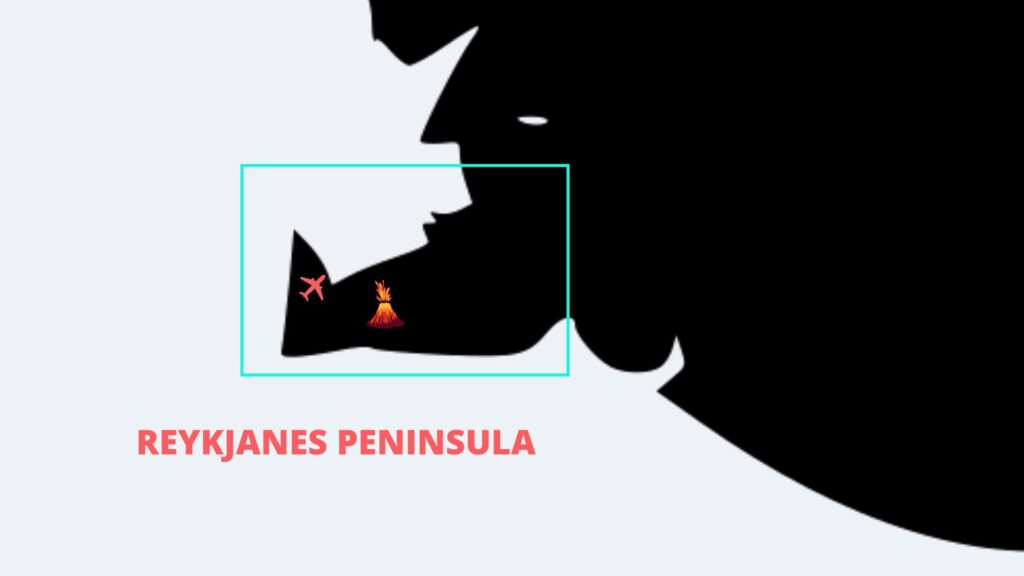
Where is the Iceland Volcano Erupting?
Recent volcanic eruptions in Iceland are located on the Reykjanes Peninsula in the country’s southwest corner.
It’s 12 miles (20km) from KEF International Airport, 2 miles (3km) from the Blue Lagoon, and 30 miles (50km) from Reykjavik.
So yeah, it’s pretty close to things!
The recent volcanic eruptions in Iceland started in March 2021. After weeks of earthquakes, a fissure suddenly opened, and eruptions began at Fagradalsfjall after previously being dormant for 800 years!
Volcanic activity in the Reykjanes Peninsula has continued intermittently near Grindavík and Sundhnúksgígar, with numerous eruptions in 2023 and 2024.
I’ve got you covered with all the latest on Icelandic volcano eruptions! Check out this post where I keep a full list of every single eruption, updated with each new event. Stay in the know here!👇
➡️ READ: ⚠️ Iceland Volcano Eruption (2024) ⚠️
Icelandic Volcanoes: Eruptions Since The Seventies
Here’s a quick rundown of the most significant eruptions in recent years and active Icelandic volcanoes:
Eldfell erupted suddenly in 1973 on Heimaey, forcing residents to evacuate by fishing boats while lava destroyed much of the town.
Eyjafjallajökull volcano in Iceland erupted in 2010, disrupting air travel for millions with its massive ash cloud.
Grímsvötn, Iceland’s most active volcano, erupted in 2011, causing glacial bursts and local flooding.
Bárðarbunga had its largest eruption in over 200 years from 2014 to 2015, closing the area due to sulfur dioxide pollution and glacial flooding.
Fagradalsfjall on the Reykjanes Peninsula started in March 2021, with spectacular lava displays attracting many visitors.

Most recently, the eruptions in Sundhnúksgígar on the Reykjanes Peninsula have been ongoing since 2023 and 2024.
Is it Safe to Go to Iceland Right Now?
The live volcano in Iceland affects the locals in Grindavík. They’re allowed to live in their homes but forced to evacuate during eruptions.
Barriers have also been built around the nearby power plant, Grindavík, and Blue Lagoon to protect these areas.
However…
Most areas around the country are safe and open for tourists.
If you’re planning a trip, don’t let the volcanic eruption in Iceland deter you.
The foreign media often exaggerates events around Icelandic volcanoes – it makes the stories that much juicier!
The latest eruptions are localized on the Reykjanes Peninsula, but the rest of Iceland is completely safe to visit.
Life for those outside the affected areas carries on as normal.
So, should you still visit Iceland in light of the recent eruptions?
Absolutely!
There’s no need to cancel or delay your trip.
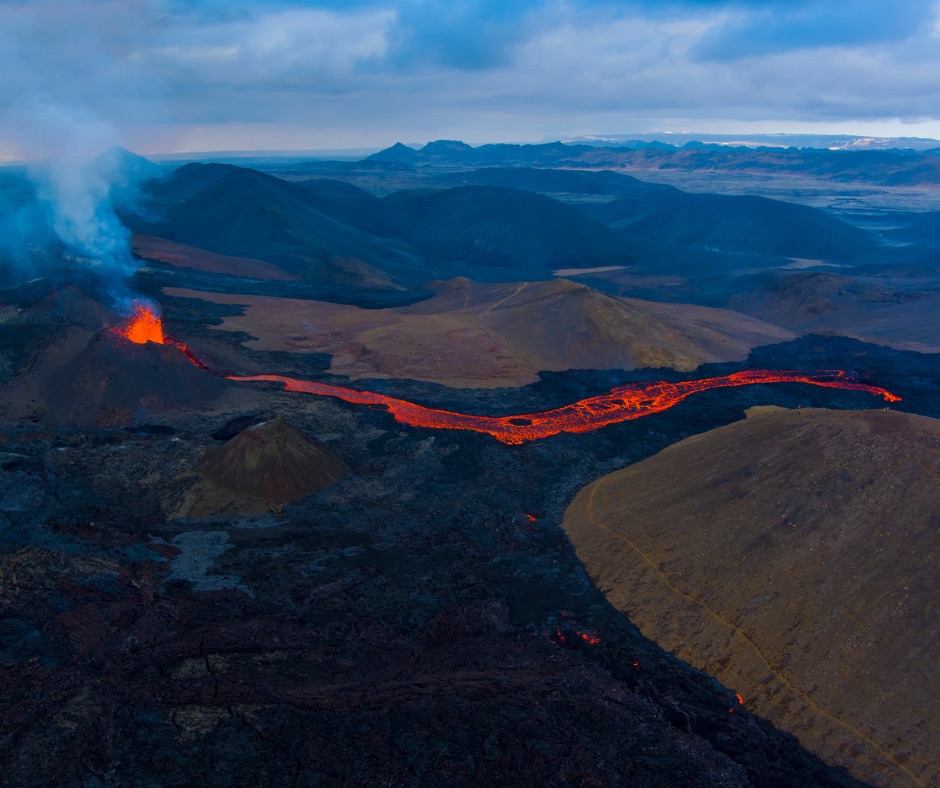
Icelandic Volcanoes & Tourism
Most roads on the Reykjanes Peninsula remain open, but others have been overtaken by lava, and accessing this area is not as easy as it used to be.
Knowing which roads are closed depends on the earthquakes and volcanic activity at the time that you’re visiting.
For the latest updates on road conditions and closures, I suggest checking Road.is daily.
Is the Airport Operating?
A lot of you have been wondering about flights to Iceland and if it’s even possible to travel here now.
Keflavík International Airport is completely operational and flights haven’t been canceled or delayed by the recent volcanic eruptions in Iceland.
Iceland Volcano News: The Blue Lagoon
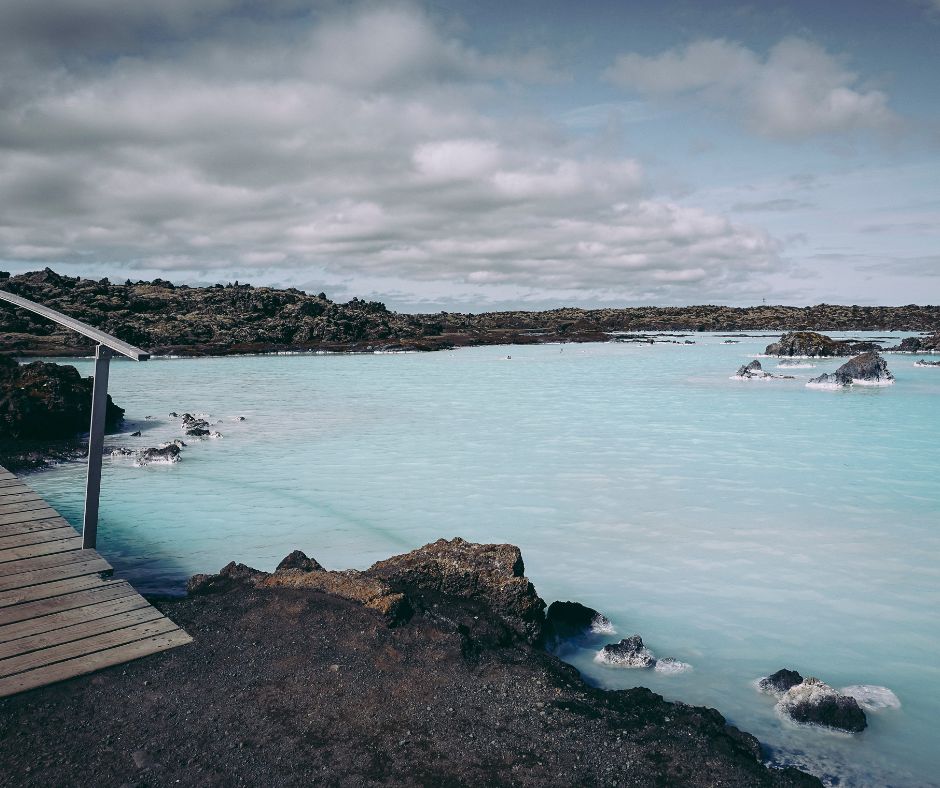
The Blue Lagoon is very close to the fault line and some of the eruptions have been closer than others resulting in evacuations at the last minute.
You’ve seen the photos, it’s iconic, and I know you want to see it…
But, the last thing I want for you is to worry about your and your family’s safety while you are here.
I strongly advise that you skip the Blue Lagoon this time. There are plenty of other hot springs worth visiting in the country, I promise!
Pro Tip: I recommend visiting the Sky Lagoon instead. It’s close to Reykjavík and it’s just as amazing! Heads up though, you’ll want to reserve your spot well in advance.
If you’re looking for more Blue Lagoon Alternatives, I wrote a blog post about my top 10 picks. Check it out here.👇
➡️ READ: Top 10 Blue Lagoon Alternatives: Hot Springs, Pools, and Spas That Are Just as Breathtaking
Exploring Active Icelandic Volcanoes
Can you access and safely hike to this volcano?
First things first, this is NOT a tourist volcano.
The current volcanic eruptions in Iceland are very different from those in 2021 and 2022. Back then there was a whole hike that was designed around the volcano. There was a parking lot and food trucks and guided tours, the works!
It was very accessible to get to that string of volcanoes.
Right now, it’s a lot more dangerous.
So, as of June 2024, if you’re hoping to access this volcano, think again.
Authorities are taking massive precautions and have completely closed off the roads during ACTIVE lava flows. Law enforcement is strictly prohibiting access to the area.
However, locals and tourists can park at the intersection of routes 41 and 43 where there’s a small roundabout.
They park their vehicles there and then walk to a nearby hill area. From this vantage point, it’s possible to see the eruption from a safe distance – just remember, NO drones allowed!
Getting closer, hiking to the eruption site, or taking close-up photos when there is active lava flow is not permitted. However, when active lava flow has subsided they DO reopen the road so it may be possible to drive by the new lava field depending on the conditions when you visit.
The only way to get a better look at the volcano is by taking a helicopter tour.
Helicopter Tours
If you’re looking for active volcano tours in Iceland, taking a helicopter tour is still possible.
Depending on the conditions, this could be the only way to see an active eruption site.
These tours tend to sell out fast, so make sure that you book well in advance.
Take a helicopter volcano tour in Iceland from Reykjavík to active sites like Reykjanes and see the volcano up close!
Check it out below:👇
➡️ TAKE A TOUR: Reykjanes Volcano Area – Helicopter Tour from Reykjavík
I took a helicopter tour back in 2022, and let me tell you, it was an awesome experience.
Don’t forget to bring your camera gear along!👇
Visiting Other Volcanoes in Iceland
Many of Iceland’s volcanoes that are NOT erupting can be explored safely. Here are some of the most popular Icelandic volcanoes you might want to add to your itinerary.
Hekla Volcano
Hekla can be found in the South of Iceland. The area surrounding it was once forested but with the many eruptions and deposits of tephra (ash) onto the landscape, it’s been difficult for anything to grow.
It has erupted 20 times since Iceland was settled, with the last time in the year 2000.
Hekla is one of the most famous Icelandic volcanoes and there are a lot of tours available to see it.
If you’re keen on driving up to Hekla Volcano and exploring the surrounding area, check out this tour:👇
➡️ TAKE A TOUR: Private Hekla & Mælifell
Thrihnukagigur (Þríhnúkagígur) Volcano
Thrihnukagigur (Þríhnúkagígur) is accessible by car from Reykjavík, and it’s only a 30-minute drive away.
It’s the only volcano in the world where you can go inside and descend into its magma chamber. IN the volcano!
How cool is that?!
While it is smaller than the average volcano, you could fit the Statue of Liberty in the magma chamber.
➡️ TAKE A TOUR: Inside the Volcano
Setting off on a cross-country road trip to explore volcanoes and other epic sites demands a reliable set of wheels!
Renting a car in Iceland? Make sure you’re ready for the rugged terrain and extreme weather with a fully equipped vehicle from Blue Car Rental.
💥Get an exclusive 5% discount when you check out using my 👉 VIP link!
Volcano Hikes in Iceland
Under normal conditions, you can plan to hike to a volcano in Iceland on your own, but tours are often the best and safest way to do that.
Remember that right now, you are not allowed to go it alone to the Reykjanes eruption site. Hikes are closed off and the only tours available are aerial tours.
With so many volcanoes in Iceland that have shaped the landscapes, you can be sure to find incredible hiking trails for all skill levels.
Askja + Viti Volcanic Crater
If you’re visiting North Iceland, you’ve got to check out Askja and Viti volcanic craters. The drive is an adventure on its own, but you can see the new lava field created by the eruption of Bárðarbunga and even go down and swim in Viti crater!
Check it out here:👇
➡️ WATCH:
Fimmvörðuháls Trail
Hike the Fimmvörðuháls volcano trail and experience Eyjafjallajökull volcano. This is not a hike for the faint of heart and is considered challenging. I can scratch this one off my bucket list and if you want to know what to expect, I made a video all about it here.👇
➡️ WATCH:
Staying Safe
If there’s a volcanic eruption in Iceland and an area needs to be evacuated, follow the evacuation steps immediately.
Put your safety first and whatever you do, steer clear of any restricted areas – they’re off-limits for good reasons!
While there’s a pretty extensive monitoring system for Icelandic volcanoes, eruptions can happen at any time and are often preceded by an earthquake or a series of earthquakes – sometimes with only a 45-minute warning!
When searching for official volcano in Iceland updates, take a look at safetravel.is and volcanoweather.is. They also include a map of Iceland’s volcanoes.
Stay Informed: You’ll want to check reliable sources for volcanic activity and weather forecasts before heading out on your hike. Try not to organize it too far in advance because conditions can change quickly.
Trail safety and warnings: If hiking is allowed to the site of a volcano, follow the warnings about hiking to Icelandic volcanoes. Stick to marked trails and DO NOT walk on lava – even if it looks like it is cooled, it may be unstable and you could fall through! When there’s volcanic activity, make sure to follow the evacuation instructions right away and don’t go to areas marked off-limits.
Correct gear: This is Iceland, so be prepared for all kinds of weather on your hike. Wind and waterproof layers and sturdy hiking shoes are always a must and don’t forget to pack extras like a headlamp, hiking poles, thermal base layer hat, food, and water.
Not sure what to pack for your adventure in Iceland? Let me help you!
My Ultimate Packing Guide covers everything you need to know, from essentials for each season to necessary documents and electronics for your trip. Get handy packing checklists and even my personal recommendation on the gear you need.
And the best part? It’s FREE!
Download your packing guide below.👇
FAQs About the Volcanic Eruptions in Iceland
I know that you have a lot of questions, and here are a couple more of the most popular ones I get about Iceland’s volcanoes.
What’s the Safest Way to Witness an Active Volcanic Eruption in Iceland?
I recommend going with a professional and reputable tour provider for this. Trying to explore active volcanic areas on your own can be dangerous, but guided tours prioritize both the thrill of the experience and your safety.
How has Iceland Volcano’s Recent Eruption Affected Locals?
Grindavík, a tiny village of about 4,000 people, has been the most affected by earthquakes and lava flows just south of where the volcano is erupting.
Major roads and homes have massive cracks, and some houses have even burned down because lava got too close. Because this has been going on for months, most have packed up and moved away.
Still, there are a few who hang on and stay in their homes.
As for locals in the rest of the country, life carries on as normal.
Is the Iceland Volcano Still Erupting And When Will the Eruptions Stop?
Volcanoes in Iceland can become dormant for centuries, but when they erupt they can go on and off for years.
THIS system is ongoing and seems to be short but frequent with bursts lasting from two days to two months.
So, if you’re planning a trip to Iceland, do not let these events steer you away from visiting!
Icelandic volcanoes erupting are a part of life if you’re living in Iceland.
Life goes on as normal – the main takeaway is to stay away from flowing lava and the rest of Iceland is your oyster!
Are you ready to learn more about the best-kept secrets and unique experiences Iceland has to offer – from a local?
If you love getting valuable information and staying up to date with what’s happening around the country, then join Team Iceland🇮🇸 and subscribe to my email list.
Get insider updates (including Iceland volcano news), VIP savings, new resources, and the best tips to plan a trip of a lifetime!
Subscribe here.👇
Happy planning,

Pin it for Later!
